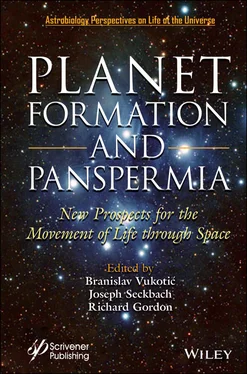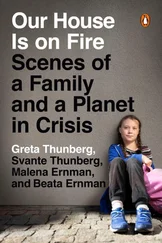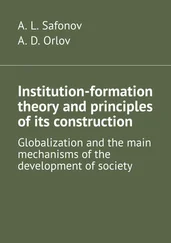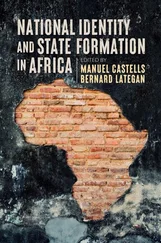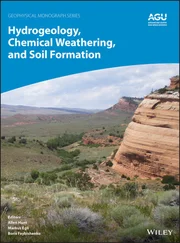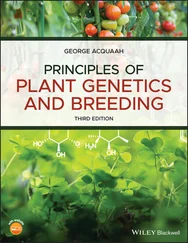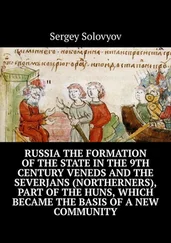Planet Formation and Panspermia
Здесь есть возможность читать онлайн «Planet Formation and Panspermia» — ознакомительный отрывок электронной книги совершенно бесплатно, а после прочтения отрывка купить полную версию. В некоторых случаях можно слушать аудио, скачать через торрент в формате fb2 и присутствует краткое содержание. Жанр: unrecognised, на английском языке. Описание произведения, (предисловие) а так же отзывы посетителей доступны на портале библиотеки ЛибКат.
- Название:Planet Formation and Panspermia
- Автор:
- Жанр:
- Год:неизвестен
- ISBN:нет данных
- Рейтинг книги:3 / 5. Голосов: 1
-
Избранное:Добавить в избранное
- Отзывы:
-
Ваша оценка:
- 60
- 1
- 2
- 3
- 4
- 5
Planet Formation and Panspermia: краткое содержание, описание и аннотация
Предлагаем к чтению аннотацию, описание, краткое содержание или предисловие (зависит от того, что написал сам автор книги «Planet Formation and Panspermia»). Если вы не нашли необходимую информацию о книге — напишите в комментариях, мы постараемся отыскать её.
Audience
Planet Formation and Panspermia — читать онлайн ознакомительный отрывок
Ниже представлен текст книги, разбитый по страницам. Система сохранения места последней прочитанной страницы, позволяет с удобством читать онлайн бесплатно книгу «Planet Formation and Panspermia», без необходимости каждый раз заново искать на чём Вы остановились. Поставьте закладку, и сможете в любой момент перейти на страницу, на которой закончили чтение.
Интервал:
Закладка:
Table of Contents
1 Cover
2 Title page
3 Copyright
4 Preface References
5 Part I PHILOSOPHICAL ASPECTS OF PANSPERMIA 1 “On the Origin of Life” 2 Why We Should Take Interstellar Panspermia Seriously 2.1 Introduction 2.2 The Case for Interstellar Panspermia 2.3 Theoretical Consequences of Interstellar Panspermia 2.4 Conclusions References 3 The Extended Continuity Thesis, Chronocentrism, and Directed Panspermia 3.1 Introduction: The Continuity as a Pre-Requisite for Scientific Grounding of Astrobiology 3.2 Versions and Resistance 3.3 Cultural Evolution and Directed Panspermia 3.4 Conclusion and Prospects Acknowledgements References 4 Life in the Milky Way: The Panspermia Prospects 4.1 Introduction 4.2 Three Levels of Habitability and Panspermia 4.3 Conclusions Acknowledgements References
6 Part II MICROORGANISMS AND PANSPERMIA 5 Planetary Protection: Too Late 5.1 Introduction 5.2 What is Planetary Protection 5.3 Extent of Earth Biosphere 5.4 Extension to Other Planetary Bodies 5.5 Backward Contamination 5.6 Interplanetary Exchange 5.7 Habitable Conditions for Interplanetary Micronauts 5.8 Conclusion Appendix A Appendix B Appendix C Acknowledgments References 6 Microbial Survival and Adaptation in Extreme Terrestrial Environments— The Case of the Dallol Geothermal Area in Ethiopia 6.1 Introduction 6.2 Planetary Field Analog: The Case of the Dallol Geothermal Area 6.3 Life in Extreme Environments 6.4 Conclusion and Remarks on Panspermia Acknowledgements References 7 Escape From Planet Earth: From Directed Panspermia to Terraformation Acknowledgements References
7 Part III FORMATION AND EVOLUTION OF PLANETS: MATERIAL EXCHANGE PROSPECTS 8 Catalyzed Lithopanspermia Through Disk Capture of Biologically Active Interstellar Material 8.1 Introduction 8.2 Capture of Interstellar Planetesimals 8.3 Catalyzed Lithopanspermia 8.4 Conclusion and Discussion Acknowledgements References 9 Lithopanspermia at the Center of Spiral Galaxies 9.1 Introduction 9.2 The Kepler Transit Survey and the Distribution of Living Worlds 9.3 XUV Hydrodynamic Escape and the Formation of Habitable Evaporated Cores 9.4 Frequency of Exchange in High Stellar Densities 9.5 Detecting Panspermia 9.6 Concluding Remarks References 10 Wet Panspermia 10.1 Introduction 10.2 Earth and Its Isotopic World: Geological and Environmental Implications 10.3 Quest for the Primordial Water Worlds 10.4 Looking for the Biotic Traces in Extraterrestrial Material 10.5 Ices of the Moon and Proposal of Earth-Induced Wet Panspermia in the Solar System 10.6 Implications for Other Planets of the Inner Solar System? 10.7 Conclusions References 11 There Were Plenty of Day/Night Cycles That Could Have Accelerated an Origin of Life on Earth, Without Requiring Panspermia Acknowledgement References 12 Micrometeoroids as Carriers of Organics: Modeling of the Atmospheric Entry and Chemical Decomposition of Sub-Millimeter Grains 12.1 Micrometeorites and the Search for Life 12.2 White Soft Minerals 12.3 Atmospheric Entry Model 12.4 Results 12.5 The Role of Primordial Atmospheres 12.6 Conclusions References 13 Dynamical Evolution of Planetary Systems: Role of Planetesimals 13.1 Introduction 13.2 Planetesimal Formation and Evolution 13.3 Transporting Mechanism in Later Stages of Planetary System Evolution 13.4 Conclusion Acknowledgements References
8 Part IV FURTHER PROSPECTS 14 A Survey of Solar System and Galactic Objects With Pristine Surfaces That Record History and Perhaps Panspermia, With a Plan for Exploration 14.1 Introduction 14.2 Recording Properties 14.3 Pristine Potential of Solar System Bodies 14.4 Prospects and Conclusions Acknowledgements References 15 The Panspermia Publications of Sir Fred Hoyle Acknowledgements References
9 Index
10 Also of Interest
11 End User License Agreement
Guide
1 Cover
2 Table of Contents
3 Title page
4 Copyright
5 Preface
6 Begin Reading
7 Index
8 Also of Interest
9 End User License Agreement
List of Illustrations
1 Chapter 3 Figure 3.1 A symbolic representation of the feedback created by directed pansper...
2 Chapter 4 Figure 4.1 Sketch of the levels of influences of matter and their inter-relation...
3 Chapter 5 Figure 5.1 Author (left) with colleagues in the class 100,000 cleanroom at the M... Figure 5.2 Left: The very first photograph that Neil Armstrong took on the Moon:...Figure 5.3 Left: Plotted orbits of all known inner Solar System asteroids as of ...Figure 5.4 Left: Present-time factors for habitability of terrestrial planets. P...
4 Chapter 6Figure 6.1 Location map of the Danakil Depression and the Dallol geothermal area...Figure 6.2 Landsat 8 pan-sharpened RGB-321 color composite image (scene ID: LC81...Figure 6.3 (a and b) Photographs of the Assale salt plain showing irregular poly...Figure 6.4 Panoramic view (from southwest) of the Black Mountain. Note the whiti...Figure 6.5 (a) Panoramic view of a field of sulfur and halite deposits associate...Figure 6.6 Photographs of the mounds at the Dallol Hot Springs site. (a) Field o...Figure 6.7 Photographs of terrace morphologies at the Dallol Hot Springs site. (...Figure 6.8 (a) Active mushroom-like structures (field of view ca. 4 m). Reproduc...Figure 6.9 (a) White halite salt rims (a few mm in thickness) forms as a result ...
5 Chapter 7Figure 7.1 The TRAPPIST-1 exoplanets (labeled b through h), compared to Mercury,...Figure 7.2 Breakthrough Starshot Lightsail nanocraft. (a). StarChip—a centimeter...Figure 7.3 Artist’s impression of ‘Oumuamua (1I/2017 U1). Discovered on October ...
6 Chapter 8Figure 8.1 Total number of captured planetesimals as a function of their size. S...
7 Chapter 9Figure 9.1 Planet mean density ρp as a function of galactocentric distance R gc. ...Figure 9.2 Number of captured objects as a function of their velocities. Higher ...Figure 9.3 Theoretical spatial density of rocky planets ( n terr) as a function of...Figure 9.4 Spacetime topography of life-bearing planets for a case with the incl...
8 Chapter 11Figure 11.1 Estimates for the date of LUCA seem to have settled down. From Table...
9 Chapter 12Figure 12.1 Thermal curves of different entry scenarios related to a MgCO 3micro...Figure 12.2 Magnesium carbonate fraction occurrences at different altitudes.Figure 12.3 Radiative and evaporative energy loss contributions during the atmos...Figure 12.4 Grazing entry scenarios of MgCO 3micrometeoroids.Figure 12.5 Thermal curves of different entry scenarios related to a CaCO 3micro...Figure 12.6 Calcium carbonate fraction occurrences at different altitudes.Figure 12.7 Grazing entry scenarios of CaCO 3micrometeoroids.Figure 12.8 Radiative and evaporative energy loss contributions during the atmos...Figure 12.9 Thermal curves of different entry scenarios related to a FeCO 3micro...Figure 12.10 Iron carbonate fraction occurrences at different altitudes.Figure 12.11 Radiative and evaporative energy loss contributions during the atmo...Figure 12.12 Grazing entry scenarios of FeCO 3micrometeoroids.Figure 12.13 Thermal curves of different entry scenarios related to a CaSO 4micr...Figure 12.14 Anhydrous calcium sulfate fraction occurrences at different altitud...Figure 12.15 Radiative and evaporative energy loss contributions during the atmo...Figure 12.16 Atmospheric density effect (Figure from [12.80]).Figure 12.17 A nitrogen molecule (blue) just before the impact with the crystal ...Figure 12.18 Relative probabilities of the different events following the impact...Figure 12.19 Thermal histories of a MgCO 3(top left), CaCO 3(top right), FeCO 3(...Figure 12.20 Thermal histories of a MgCO 3(top left), CaCO 3(top right), FeCO 3(...Figure 12.21 Thermal histories of a MgCO 3(top left), CaCO 3(top right), FeCO 3(...
Читать дальшеИнтервал:
Закладка:
Похожие книги на «Planet Formation and Panspermia»
Представляем Вашему вниманию похожие книги на «Planet Formation and Panspermia» списком для выбора. Мы отобрали схожую по названию и смыслу литературу в надежде предоставить читателям больше вариантов отыскать новые, интересные, ещё непрочитанные произведения.
Обсуждение, отзывы о книге «Planet Formation and Panspermia» и просто собственные мнения читателей. Оставьте ваши комментарии, напишите, что Вы думаете о произведении, его смысле или главных героях. Укажите что конкретно понравилось, а что нет, и почему Вы так считаете.
